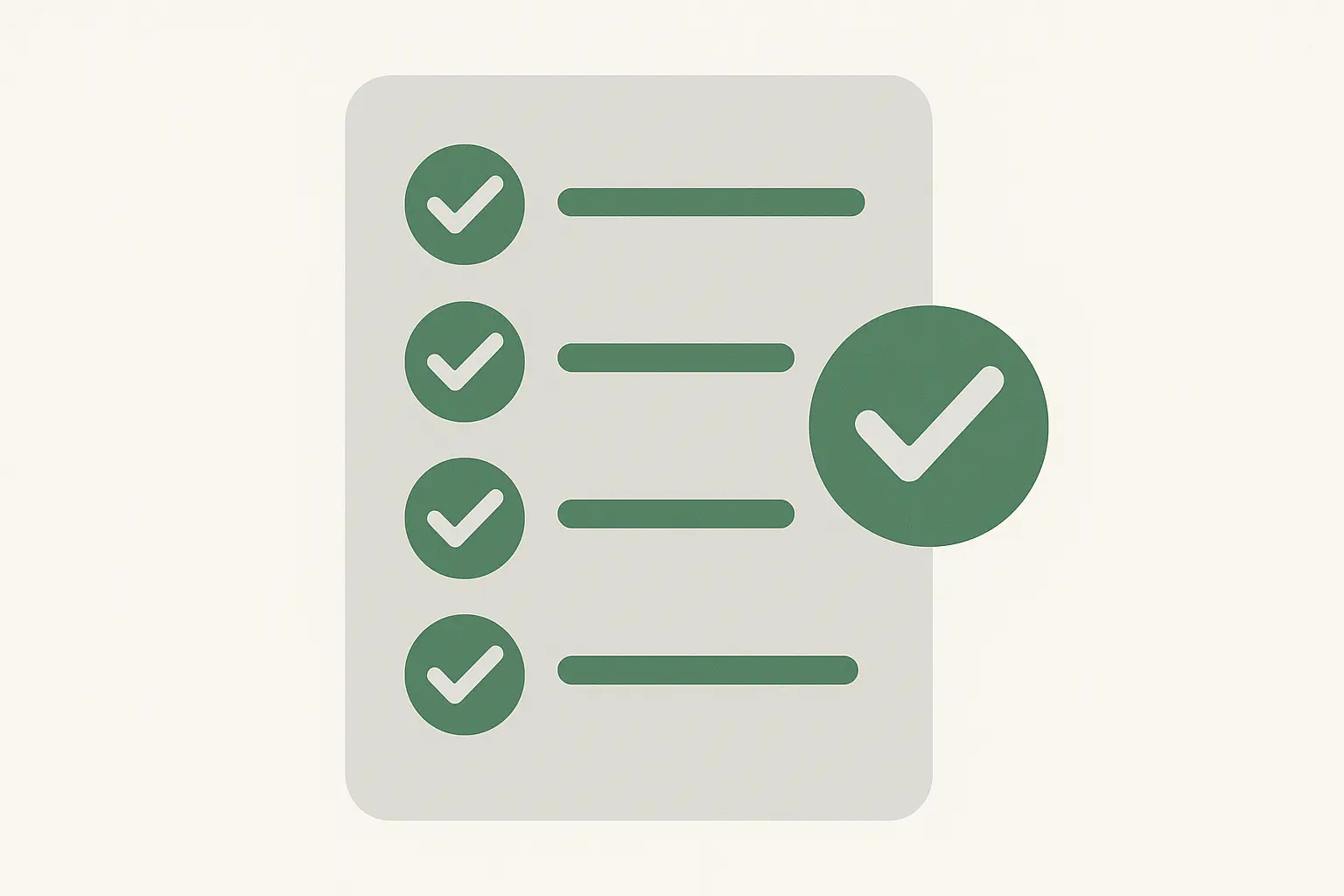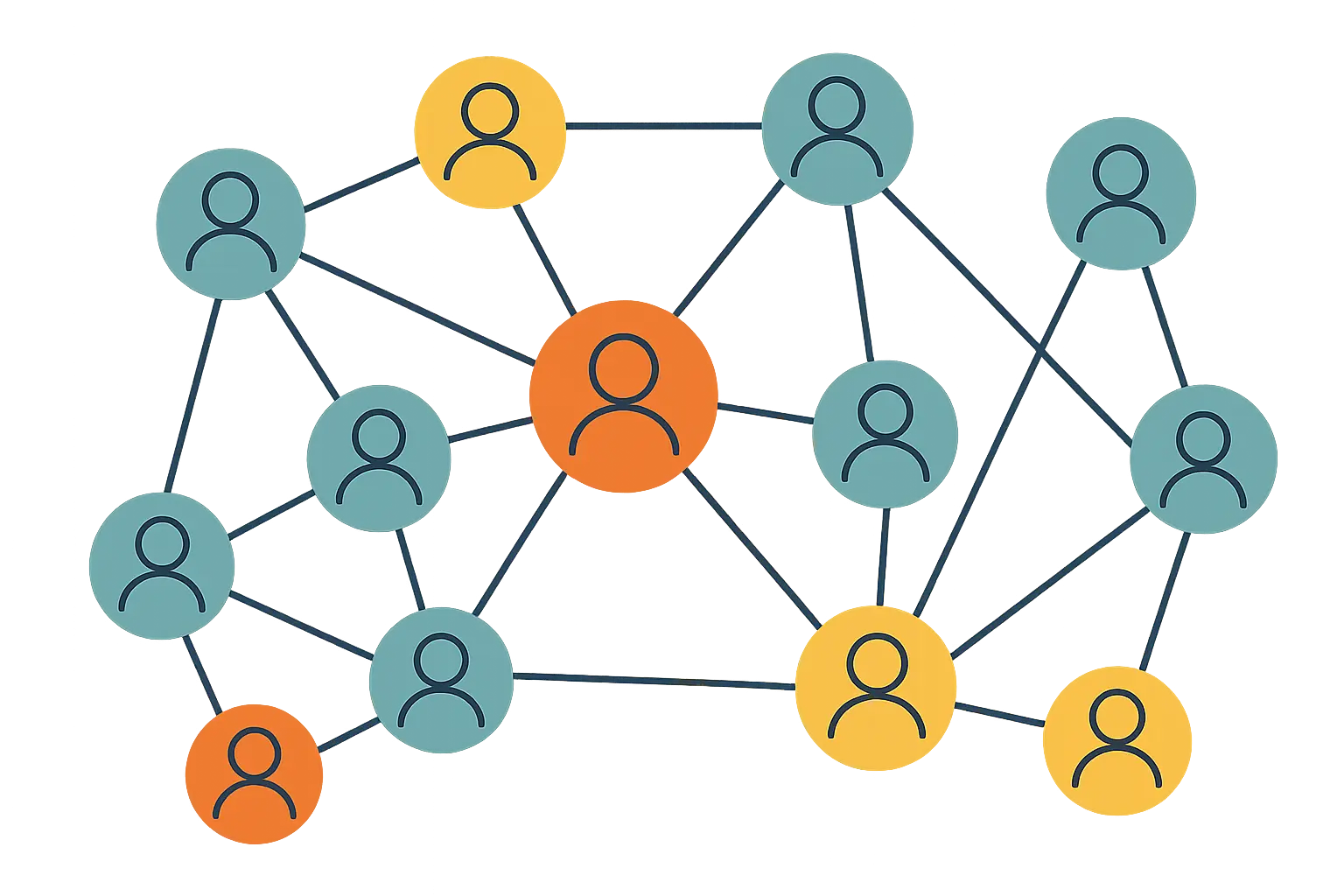I used to think case studies were just fancy testimonials. Boy, was I wrong. After watching a client’s revenue jump 40% because prospects kept referencing their Salesforce success story, I realized these aren’t just marketing fluff—they’re sales weapons. With Salesforce powering customer success stories for companies worldwide, where “AI agents help them distribute more unused goods and lower their carbon footprint by up to 20%” according to Salesforce, I’ve learned that well-crafted case studies can make or break your competitive position.

Table of Contents
-
Fundamentals of Salesforce Case Studies
-
Customer Success Story Development
-
Implementation and Analysis Framework
-
Strategic Business Applications
TL;DR
-
Stop treating case studies like afterthoughts—they’re revenue drivers when done right
-
Pick customers with 30%+ improvements in areas prospects actually care about
-
Real quotes beat polished marketing speak every single time
-
Track everything: downloads, sales usage, deal influence, and conversion rates
-
Turn your best customers into ongoing advocates, not one-time case studies
-
Get approval early and document everything before memories fade
Fundamentals of Salesforce Case Studies
Here’s what drives me crazy: I’ll walk into a company and ask to see their case studies, and they’ll hand me some generic PDF that reads like a press release. No wonder their sales team never uses them!
Real Salesforce case studies aren’t marketing fluff pieces. They’re data-driven stories that make prospects think “holy crap, that’s exactly what we need.” When done right, they become revenue-driving machines that work across your entire sales and marketing ecosystem.

What Actually Makes Case Studies Work
I’ve seen too many case studies that read more like product brochures than actual customer stories. The difference between effective and ineffective case studies comes down to three things: a logical problem-to-solution flow, numbers that make people do double-takes, and real voices from real people.
The first time I saw a prospect forward our case study to their entire buying committee, I knew we’d cracked the code. These elements work together to create content that prospects actually want to read and share.
The Problem-Solution-Results Framework
Your case study needs to start with a problem that makes readers nod their heads in recognition. Here’s my structure: the nightmare that kept the customer up at night, how Salesforce solved their specific pain points, and the concrete results that prove it worked.
Don’t go generic on me. Instead of saying “Company X needed better customer management,” dig deeper: “Company X’s sales team was spending 40% of their time on manual data entry, causing them to miss follow-up opportunities worth $2.3 million annually.”
I remember working with a manufacturing client whose sales team was drowning in spreadsheets. Sarah, their VP of Sales, told me her people spent more time updating cells than talking to customers. Six months after implementing Salesforce, she texted me a screenshot of her dashboard with three fire emojis. Their close rate had jumped from 12% to 31%.
|
Case Study Component |
What Doesn’t Work |
What Actually Works |
|---|---|---|
|
Challenge |
“Needed better CRM” |
“Sales team spent 40% of time on manual data entry, missing $2.3M in opportunities” |
|
Solution |
“Implemented Salesforce” |
“Deployed Sales Cloud with automated lead scoring and workflow triggers” |
|
Results |
“Improved efficiency” |
“Reduced data entry time by 67%, increased qualified leads by 45%” |
Numbers That Actually Matter
Here’s my rule: if the improvement doesn’t make you do a double-take, it won’t make prospects care. I once had a customer excited about a 5% efficiency gain. Sweet for them, but try getting a busy executive excited about 5%. Now I hunt for the 30%+ wins that make people sit up and pay attention.
Prospects want to see three types of metrics: money (revenue increase, cost savings), time (efficiency gains, faster processes), and strategic wins (market expansion, competitive advantages).
Here’s what works: “Reduced customer onboarding time by 67%, from 45 days to 15 days, resulting in $890,000 additional annual revenue from faster time-to-value.” That’s specific, measurable, and directly tied to business impact.
What makes me want to scream: “Significantly improved customer satisfaction and streamlined processes.” That tells me absolutely nothing useful.
When measuring these outcomes, implementing comprehensive ROI calculation methodologies ensures accurate attribution and demonstrates the true business impact of your Salesforce case study investments.
Real Voices, Not Corporate Speak
You know what carries more weight than any polished marketing copy? Real quotes from actual customers. I always include voices from multiple people – the C-suite executive who approved the budget, the IT director who managed implementation, and the end users who work with the system daily.
The best quotes reveal both rational and emotional benefits. A CFO might say, “We saw 23% cost reduction in our first quarter,” while a sales manager adds, “My team actually looks forward to updating their pipeline now instead of dreading it.”
I avoid sanitized, corporate-speak testimonials like the plague. Give me the authentic voices that include minor hesitations, specific details, and personal perspectives that make the customer story believable.

Tailoring for Different Industries and Company Sizes
Different industries care about completely different things. A healthcare case study emphasizes compliance and patient outcomes, while a manufacturing customer story focuses on operational efficiency and supply chain optimization. Miss this nuance, and your case study falls flat.
Enterprise vs. SMB: They’re Different Animals
Enterprise buyers want to see how solutions scale across thousands of users and integrate with their Frankenstein monster of existing systems. They’re worried about change management, training requirements, and long-term strategic alignment.
SMB prospects care more about quick implementation, immediate ROI, and minimal disruption to daily operations. They want to know they won’t need a dedicated IT team to manage the solution.
I structure enterprise case studies around phases of implementation and departmental impact. SMB case studies focus on before-and-after scenarios with emphasis on simplicity and speed of results.
Recent developments in AI-powered case studies are reshaping how organizations approach customer success stories. “Wiley says Agentforce has increased self-service results and efficiency by over 40 percent and has achieved a 213 percent ROI from its Service Cloud integration” according to CX Today, demonstrating the measurable impact that modern AI-enhanced Salesforce implementations can deliver.
Getting the Facts Straight (Without Losing Your Mind)
Look, getting the facts straight isn’t glamorous, but it’ll save your butt later. I learned this the hard way when a customer’s legal team came back six months later questioning every number in our case study.
How to Actually Collect Data That Matters
I start data collection before the customer even realizes they’ll be a case study. During implementation, I track baseline metrics and document challenges as they arise. This creates a complete picture of the customer journey.
Here’s what I’ve found: customers have selective memory about their problems. Ask them six months later and suddenly their old system “wasn’t that bad.” That’s why I document the pain points while they’re still fresh—preferably when they’re still complaining about their current headaches.
My interview process has three phases: the mess they were in before (what was broken and why), the implementation rollercoaster (challenges, surprises, key moments), and the victory lap (specific metrics, unexpected benefits, ongoing impact).
I always request access to actual system data rather than relying solely on customer estimates. Screenshots of dashboards, reports showing before-and-after metrics, and system-generated analytics provide concrete evidence that supports the story.
For comprehensive data analysis, leveraging advanced analytics for strategic growth helps identify the most compelling metrics and trends that will resonate with prospects reading your Salesforce case studies.
My Case Study Data Collection Checklist:
-
Baseline metrics documented pre-implementation
-
Stakeholder interviews scheduled across departments
-
System access granted for data validation
-
Timeline of implementation milestones established
-
Competitive landscape context gathered
-
ROI calculations verified with finance team
-
Customer approval process initiated early
Navigating the Approval Maze
Here’s the thing about getting approval for case studies—it’s like herding cats. Everyone wants to be featured, but nobody wants to share real numbers. I’ve learned to get buy-in early and be crystal clear about what we’re sharing.
Customer approval processes can make or break case study timelines. I build approval workflows into project planning from day one, not as an afterthought. Some customers want complete anonymity, others are happy to be named but want certain metrics kept confidential.
Industry regulations add another layer of complexity. Healthcare customers need HIPAA compliance, financial services require specific data handling protocols, and government clients have approval processes that can take months.
The importance of robust compliance protocols has been highlighted by recent security incidents. The “Salesloft Drift data breaches of August 2025 stand as one of the most significant supply chain attacks in SaaS history” according to Cyber Security News, emphasizing why case study documentation must include stringent data protection and approval processes.
Making Sure Everything Checks Out
I verify every statistic through at least two sources. Customer-reported metrics get cross-referenced with system data when possible. Financial claims require documentation or at minimum, detailed explanation of calculation methodology.
My verification checklist includes: metric accuracy, timeline verification, stakeholder title and role confirmation, company information updates, and competitive landscape validation (making sure referenced competitors and market conditions are still accurate).
Case studies aren’t static documents. I review published case studies quarterly to ensure information remains current and accurate, updating metrics and outcomes as customers continue to see results.

Customer Success Story Development
Not every successful customer makes a good case study. I’ve learned to be selective about which stories to develop based on strategic value rather than availability or enthusiasm. The wrong customer choice can waste weeks of work and produce content that nobody cares about.
Picking the Right Customers (It’s Not Who You Think)
The selection process determines case study effectiveness before any writing begins. I look for customers whose stories will make prospects think “that’s exactly our situation” while showing results dramatic enough to grab attention.
Success Metrics That Actually Move the Needle
I look for customers with at least three types of measurable success: money impact (revenue growth, cost reduction), operational improvements (time savings, efficiency gains), and strategic advantages (market expansion, competitive positioning).
Here’s my rule: I prioritize customers showing 30%+ improvements in critical areas. A 15% efficiency gain might be good for the customer, but it won’t grab prospect attention in a noisy marketplace.
I also consider the sustainability of results. A customer who saw great results in month one but struggled in month six doesn’t make a compelling long-term success story. I wait at least six months post-implementation before developing case studies to ensure results are stable and ongoing.
According to Salesforce customer stories, “Powered by Data Cloud, Agentforce handles thousands of inquiries a week with speed and accuracy”, demonstrating the scale of measurable impact that makes for compelling case study metrics.
Market Relevance Trumps Dramatic Results
Market relevance matters more than dramatic results. A manufacturing company’s 200% productivity increase won’t resonate with healthcare prospects who care more about patient outcomes and compliance.
I evaluate customers based on: industry alignment with target markets, company size similarity to prospect base, use case relevance to common prospect challenges, and geographic considerations (especially for global prospects who want to see local success stories).
The most effective case studies feature customers that prospects can easily see themselves in. When a prospect reads a case study and thinks “that sounds exactly like our situation,” you’ve achieved market relevance.

Turning Data Into Stories People Actually Want to Read
Raw data doesn’t sell – stories do. I’ve learned that prospects connect with transformation narratives because they’re living their own version of the same journey.
The Hero’s Journey for B2B (Yes, Really)
The hero’s journey works for business case studies because it mirrors how prospects see their own challenges. The customer becomes the hero facing a business challenge (the villain), with Salesforce as the mentor providing tools and guidance for success.
I structure case studies with these elements: the ordinary world (how things were before), the call to adventure (the business challenge that demanded change), meeting the mentor (discovering Salesforce), tests and trials (implementation challenges), the ordeal (the biggest obstacle), and the reward (measurable success).
This isn’t about being dramatic – it’s about creating a narrative flow that keeps readers engaged while delivering business value.
I applied this framework to a retail client’s case study: The company (hero) faced declining customer retention rates (call to adventure), discovered Salesforce Marketing Cloud (meeting the mentor), struggled with data integration during implementation (tests and trials), overcame a major system migration challenge (the ordeal), and ultimately achieved 40% improvement in customer lifetime value (the reward).
Getting Your Case Studies in Front of the Right People
Don’t just dump your case study on the website and call it done. I’ve seen companies get 10x more mileage by chopping it up—full version for serious prospects, quick wins for social media, and bite-sized stats for email signatures.
Making Sales Teams Actually Use Them
Sales reps won’t read your beautiful case study if it’s 12 pages long. I learned to create cheat sheets—one page with the juicy quotes and key numbers they can reference during calls. Suddenly, they started using them.
Sales teams need more than access to case studies – they need training on when and how to use them effectively. I create sales playbooks that map specific case studies to common objections and prospect scenarios.
For objection handling, I provide sales teams with case study excerpts that directly address common concerns. When a prospect says “this seems too complex for our team,” the sales rep has a ready customer story about a similar company that successfully implemented with minimal IT resources.
Understanding your target audience through market sizing and business opportunity analysis helps determine which customer story formats will resonate most effectively with different prospect segments during sales conversations.
My Sales Enablement Case Study Toolkit:
-
Executive summary versions for C-suite presentations
-
Technical deep-dives for IT stakeholder meetings
-
ROI calculators based on case study metrics
-
Objection-handling talking points with supporting quotes
-
Industry-specific versions for vertical markets
-
Competitive battle cards featuring case study wins
Optimizing for Digital Channels
Different digital channels require different case study formats. Website visitors want comprehensive stories they can read at their own pace. Social media audiences prefer bite-sized insights and compelling statistics. Email subscribers respond to personal stories and specific outcomes.
I create content hierarchies from each case study: full-length versions for the website, executive summaries for email campaigns, key statistics for social media, and video testimonials for paid advertising. Each format serves a specific purpose in the customer journey.
For maximum digital impact, applying proven high-impact content strategies ensures your Salesforce case studies generate engagement and drive meaningful traffic across all digital marketing channels.
|
Channel |
Format |
Key Elements |
What Actually Happens |
|---|---|---|---|
|
Website |
Full case study |
Complete narrative, metrics, testimonials |
Deep engagement, lead generation |
|
|
Infographic |
Key statistics, visual timeline |
Social sharing, brand awareness |
|
|
Executive summary |
Problem/solution/results in 3 paragraphs |
Click-through to full content |
|
Paid ads |
Video testimonial |
Customer quote, key metric, CTA |
Conversion, demo requests |
|
Sales collateral |
One-pager |
Bullet points, charts, contact info |
Meeting facilitation |

Implementation and Analysis Framework
You know what’s satisfying? Proving that your case study actually moved the needle. I track everything—who downloads what, which stories get shared in sales calls, even which case studies prospects mention in their contracts. It’s nerdy, but it works.
Measuring What Actually Matters
Measuring case study performance requires tracking both leading and lagging indicators across the entire customer acquisition funnel. Download counts are vanity metrics – what really matters is business impact.
Tracking Real Lead Generation Impact
I track case study performance through multiple attribution models. Direct attribution measures leads who downloaded or engaged with specific case studies. Assisted attribution tracks prospects who consumed case studies during their research journey, even if they converted through other channels.
The metrics that matter: case study download-to-MQL conversion rates, time from case study engagement to sales opportunity creation, and average deal size for prospects who engaged with case studies versus those who didn’t.
I also track engagement depth – how much time prospects spend reading case studies, which sections get the most attention, and where readers drop off. This data informs content optimization and helps identify which stories resonate most with target audiences.
Modern AI-powered platforms are transforming lead generation effectiveness. According to Salesforce customer stories, “AI agents personalize follow-up on 100% of leads, helping win new customers and drive revenue”, demonstrating how advanced automation can enhance the lead nurturing process that case studies initiate.
How Case Studies Actually Impact Sales Cycles
Sales cycle impact measurement requires collaboration between marketing and sales teams to track case study usage throughout the sales process. I work with sales operations to implement tracking systems that capture when and how case studies are used in prospect interactions.
Key metrics include: average sales cycle length for deals involving case studies versus those without, win rate comparison between prospects who engaged with case studies and those who didn’t, and average contract value analysis based on case study exposure.
The most valuable insight comes from tracking which specific case studies correlate with faster deal closure and higher win rates. This data helps prioritize case study development and guides sales team training on which stories to use in different scenarios.
I implemented a tracking system for a SaaS client that revealed prospects who engaged with their manufacturing case study had 35% shorter sales cycles and 28% higher close rates compared to prospects who didn’t consume case study content. This data led to prioritizing more manufacturing-focused case studies and training the sales team to proactively share relevant stories during discovery calls.

Making Your Case Studies Better Over Time
I treat case study programs as living systems that require constant optimization based on performance data and market feedback. What worked six months ago might not work today.
A/B Testing That Actually Teaches You Something
A/B testing case studies requires systematic experimentation across multiple variables. I test headlines, story structure, visual elements, and calls-to-action to identify what drives the highest engagement and conversion rates.
My testing framework includes: headline variations (benefit-focused vs. outcome-focused), story length (comprehensive vs. condensed versions), visual presentation (text-heavy vs. infographic-style), and CTA placement and messaging.
I run tests for minimum 30-day periods to account for traffic variations and ensure statistical significance. The key is testing one variable at a time to isolate what actually drives performance improvements.
Results often surprise me. Sometimes shorter case studies outperform comprehensive versions, or industry-specific headlines beat generic benefit statements. Data trumps assumptions every time.
My A/B Testing Framework for Case Studies:
-
Hypothesis defined with specific success metrics
-
Single variable isolated for testing
-
Minimum 30-day test duration established
-
Statistical significance threshold set (95% confidence)
-
Control and variant versions created
-
Results analysis scheduled with stakeholder review
-
Implementation plan for winning variations
Strategic Business Applications
Nothing shuts down a competitor faster than a customer story they can’t match. When prospects start asking “can your solution do what Company X achieved?” you know you’ve won the positioning battle before the sales call even starts.
Using Case Studies as Competitive Weapons
Case studies become powerful competitive weapons when they demonstrate clear superiority in areas where competitors struggle to match your results. I align case study development with broader market positioning objectives.
Market Positioning Through Customer Stories
If we’re positioning as the leader in manufacturing automation, I prioritize case studies that showcase dramatic operational improvements in manufacturing environments. Market positioning through case studies works best when stories demonstrate unique capabilities that competitors can’t easily replicate.
Instead of generic “increased efficiency” stories, I focus on specific scenarios where Salesforce’s unique features delivered results that alternative solutions couldn’t match. The most effective positioning case studies become reference points that prospects use to evaluate competitive alternatives.
The impact of AI-enhanced platforms on competitive positioning is significant. According to Salesforce customer stories, “See how the airport will use AI to personalize experiences for 83 million passengers per year”, demonstrating the scale and uniqueness of capabilities that can differentiate organizations in competitive markets.

Turning Case Studies Into Customer Growth Engines
Case studies reveal expansion opportunities that might otherwise go unnoticed. When documenting customer success, I often discover additional use cases and departments that could benefit from expanded Salesforce implementation.
Building Reference Customer Programs That Actually Work
Reference customer programs turn case study subjects into active business development partners. I’ve built systematic approaches that provide ongoing value to customers in exchange for their continued advocacy and reference participation.
The program includes: exclusive customer advisory board participation, early access to new features and beta programs, co-marketing opportunities that build the customer’s brand, and speaking opportunities at industry events and conferences.
Successful reference programs create win-win relationships. Customers gain visibility and thought leadership positioning, while we benefit from authentic advocacy that influences prospect decisions more effectively than any marketing campaign.
I track reference program ROI through influenced pipeline, accelerated deal closure, and competitive win rates in situations where reference customers provide direct prospect engagement.
When evaluating reference program success, implementing comprehensive marketing ROI measurement helps quantify the business impact of customer advocacy initiatives and optimize program investments for maximum returns.
My Reference Customer Program Structure:
-
Tiered benefits based on advocacy level
-
Quarterly business reviews with program participants
-
Co-marketing opportunity pipeline established
-
Speaking engagement coordination system
-
ROI tracking for influenced opportunities
-
Annual recognition and appreciation events
-
Feedback loop for program improvement

How The Marketing Agency can help you maximize your case study ROI through data-driven content strategies and systematic performance optimization. Our attribution modeling expertise ensures you can track case study impact across the entire customer journey, while our integrated approach maximizes distribution effectiveness across all marketing channels. Ready to transform your customer success stories into revenue-driving assets? Contact us to discuss your case study strategy.
Final Thoughts
Here’s what I wish someone had told me years ago: great case studies aren’t about perfect customers or flawless implementations. They’re about real companies solving real problems and getting real results. The messier the journey, the more believable the story.
Mastering Salesforce case studies means treating them as strategic business assets rather than simple marketing materials. Success comes from understanding that effective case studies combine compelling storytelling with rigorous data validation, smart distribution, and continuous performance improvement.
The investment in building comprehensive case study programs pays dividends through improved lead generation, faster sales cycles, and stronger competitive positioning that ultimately drives sustainable business growth. When you approach case studies with the same rigor you’d apply to any other revenue-generating initiative, they become powerful tools that work across your entire go-to-market strategy.



